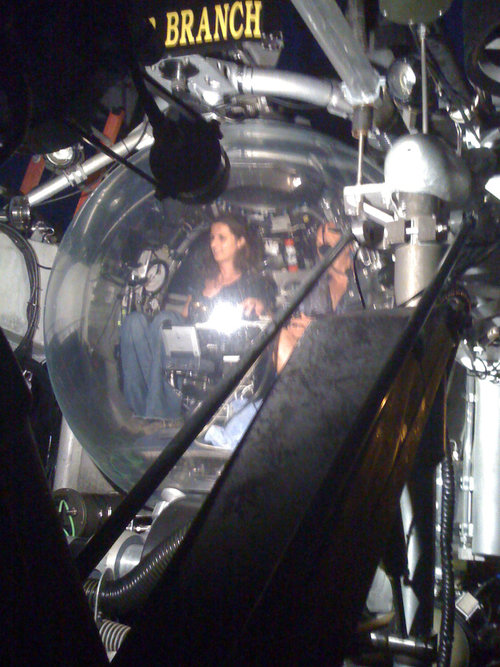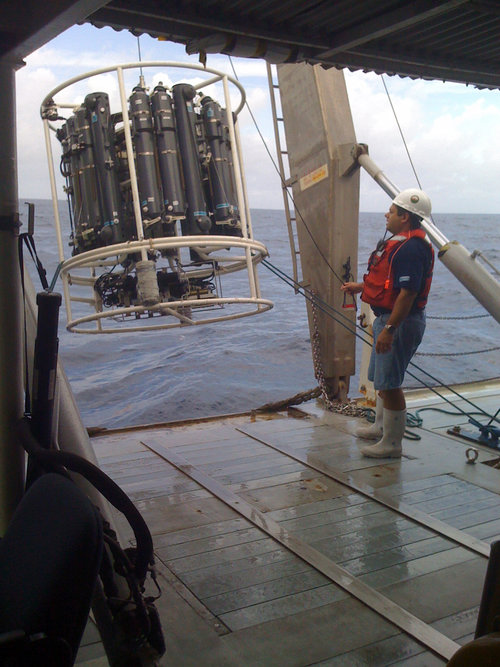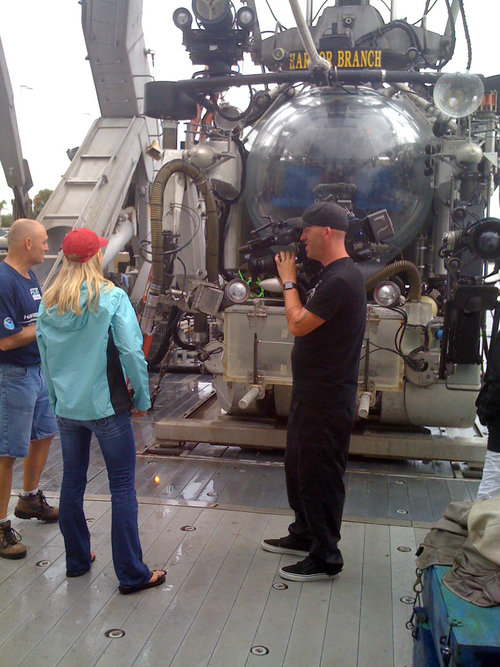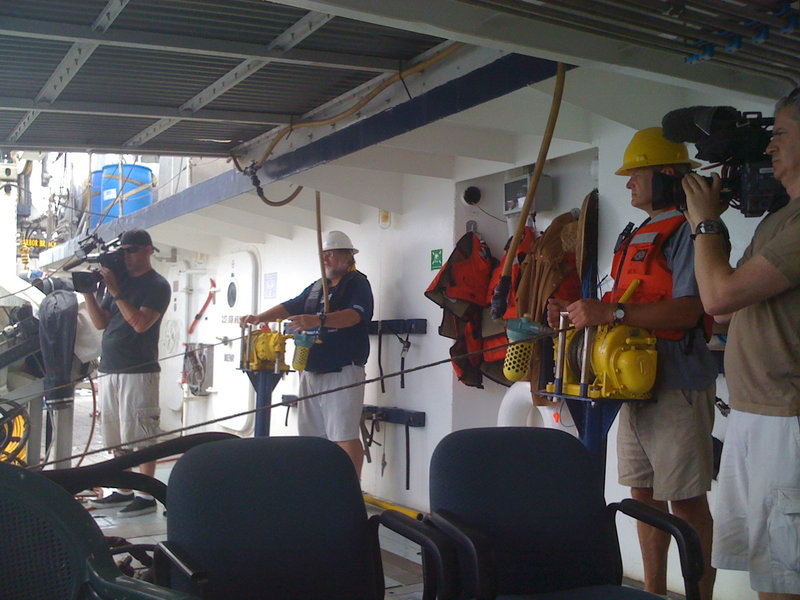
July 9 – August 9, 2010
A science team on the research vessel R/V Seward Johnson departed from Fort Pierce, Florida, in early July and headed for the eastern Gulf of Mexico. The researchers are using a submersible, a remotely operated vehicle (ROV), and other technology to assess and record conditions in the water column and on the seafloor to gather baseline data along Florida’s shelf edge.This mission, which scientists have named Florida Shelf Edge Exploration (FLOSEE), was unplanned. It is part of NOAA’s response to the Deepwater Horizon/BP oil spill, which started April 20 and continued into July.

Members of the news media aboard research vessel (R/V) Seward Johnson check out the ship’s submarine. The media was invited to help explain to the public some of the science behind NOAA’s Deepwater Horizon response efforts. Image courtesy of Keeley Belva, NOAA Office of Exploration and Research. Download larger version (jpg, 1.5 MB).

Scientists launch the CTD rosette that will take water samples and measure conductivity (or salinity), temperature, and depth. Scientists use these samples to calibrate the oxygen and salinity sensors and to measure for petroleum products, plankton, and bacteria. Image courtesy of Keeley Belva, NOAA Office of Exploration and Research. Download larger version (jpg, 1.2 MB).
The FLOSEE expedition will help provide a better understanding of the spill’s actual and potential environmental effects. Researchers are observing corals and other bottom-dwelling species to establish benchmarks for measuring change that may result from the oil and chemicals used to manage the spill. The team will also assess water quality and the abundance and diversity of life from tiny plankton to the larger species that depend on corals for survival.
The mission is funded by NOAA’s Cooperative Institute for Ocean Exploration, Research and Technology and is led by Florida Atlantic University’s Harbor Branch Oceanographic Institute (HBOI), and the University of North Carolina – Wilmington. Other partners include SRI International in St. Petersburg, Florida, and the University of Miami.

Jan Petri (left) talks with members of the CNN news team aboard R/V Seward Johnson. Image courtesy of Keeley Belva, NOAA Office of Exploration and Research. Download larger version (jpg, 1.2 MB).
“NOAA frequently joins with other organizations to supplement our research efforts. This is an example of how these partnerships are extraordinarily important, especially during this national crisis,” said Craig McLean, acting assistant administrator, NOAA Office of Oceanic and Atmospheric Research.
The new FLOSEE mission is planned for four weeks. The activities are divided into several legs, focusing on the deep reefs and hard bottom areas along the east, south ,and west Florida shelf and slope. Starting from Harbor Branch in Fort Pierce, the expedition covers a track from the Oculina reefs off the southeast coast, through the Straits of Florida to the Dry Tortugas, north through the eastern and northern Gulf of Mexico, and west along the Florida Shelf and slope toward Alabama and Mississippi.

Cameramen from CNN and BBC film conductivity, temperature, depth (CTD) sampling operations. Part of the mission’s outreach efforts include sharing visual accounts of science activities with the public. Image courtesy of Keeley Belva, NOAA Office of Exploration and Research. Download larger version (jpg, 1.3 MB).